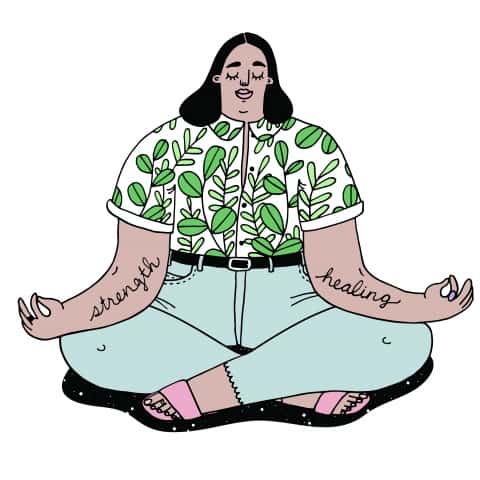If you’ve logged in to PAWS recently, you’ve most likely seen a bulletin or two advertising drop-in mindfulness meditation sessions, a Student Wellness Centre initiative that happens every Monday at the St. Thomas More College Chapel.
If you’re anything like me, you didn’t even spare a second for that new-age bullshit, jerkily manoeuvring your cursor over to the Course Tools button instead — because holy balls, you have so many assignments due in so many classes at once and you haven’t started any of them.
We accept stress as just a normal part of student life at this point, hanging over our heads like the looming tidal wrath of some vengeful god. We know it’s gonna kill us — overabundance of the stress hormone cortisol has been shown to interfere with the functioning of everything from the immune system to the menstrual cycle — but what are we supposed to do about it? Nothing.
We’ll keep on chugging down those sickly sweet double-doubles — fretting about deadline after deadline, until one day, due to a particularly powerful and surprisingly co-ordinated blood-pressure spike, we’ll all just explode in the street like a bunch of meaty fireworks.
There has to be some way we can avoid such a fate, right? Like any thriving young millennial would, I googled “help me too much stress” and clicked the first result without reading it. Mindfulness meditation is, apparently, the cure for everything.
What is mindfulness? Simply put, it’s the practice of paying attention to things. Wow, what a revolutionary new concept. Advocates of mindfulness argue that, through focus-based meditation techniques, we can learn to become truly aware of our surroundings, as well as our own mental state, and we can use this awareness to better manage the stress of life.
Stop reading this for a second and try to concentrate on the voice of your thoughts. What does it sound like? What kind of words does it use? Are they positive words or negative words? The Stoic philosopher Marcus Aurelius once wrote, “Our perturbations come only from the opinion which is within.”
Basically, whenever the other philosophers at philosophy school would make fun of his dumb beard, Marcus would acknowledge the way he felt — instead of crying — not letting it rule his actions. This understanding is the core principle behind modern mental-health practices, such as Cognitive Behavioral Therapy, which is used in the treatment of depression and other mood disorders. Next time you get worked up about something, ask yourself, “What kind of thoughts are these?”
So, how do we mindfully meditate? There’s really not much to it: sit somewhere quiet, set a timer for 10 minutes, close your eyes, and focus all your attention on your breathing. Whenever your attention wanders, take note of what it wanders to, then guide it back to your breath.
Research in the field of developmental neuroscience suggests that scraping together even a few measly minutes a day to sit and breathe can lower cortisol levels in the blood, reducing the negative effects of stress on the body. Also, mindfulness can have profound effects on your brain’s executive functioning — put simply, your attention and ability to regulate emotions. Poor executive function is associated with increased onset of ADHD, depression and drug abuse.
Mindfulness and meditation are not new ideas. Though practised most famously in Buddhism, forms of meditation are also present in the spiritual traditions of Catholicism, Judaism and Stoicism — to name a few.
“But, wait!” I hear you cry, aghast. “Is it cultural appropriation?” Nah. Meditation is not inherently religious or spiritual, despite the fact that almost every major religion incorporates some form of it — like prayer, yoga or ritualistic animal sacrifice. I’m not advocating for ritualistic animal sacrifice, here, but if that’s your thing, I won’t judge you, man.
No matter what your personal beliefs may be, meditation has been practiced by a vast array of people and has been a staple of many different cultures for thousands of years. The simplest explanation for this is that it might actually work.
—
George-Paul O’Byrne
Graphic: Jaymie Stachyruk